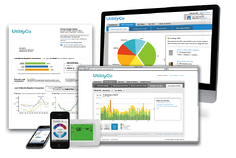The U.S. Environmental Protection Agency’s (EPA’s) plan to regulate carbon emissions is just the latest challenge facing the U.S. electric power system. Technological innovation is disrupting old ways of doing business and accelerating grid modernization. Earlier this year, AEE released Advanced Energy Technologies for Greenhouse Gas Reduction, a report detailing the use, application, and benefits of 40 specific advanced energy technologies and services. This post is the first in a series drawn from the technology profiles within that report.
 Behavioral energy efficiency (BEE) employs messaging grounded in behavioral science to produce simple, actionable messages that are relevant to customers and motivate them to save energy. Extensive research has found that the average utility customer spends nine minutes per year thinking about their energy use. When they do, they have two basic questions: How am I using energy and what can I do to save energy and money? BEE answers this question. Utilities opt customers into BEE programs, meaning savings can scale rapidly. Communications are delivered through multiple channels – e.g. web, mobile, mail – ensuring customers are engaged and focused on reducing energy consumption. Dozens of independent evaluations have found BEE programs consistently produce savings of 1.5% to 3.5% per household.
Behavioral energy efficiency (BEE) employs messaging grounded in behavioral science to produce simple, actionable messages that are relevant to customers and motivate them to save energy. Extensive research has found that the average utility customer spends nine minutes per year thinking about their energy use. When they do, they have two basic questions: How am I using energy and what can I do to save energy and money? BEE answers this question. Utilities opt customers into BEE programs, meaning savings can scale rapidly. Communications are delivered through multiple channels – e.g. web, mobile, mail – ensuring customers are engaged and focused on reducing energy consumption. Dozens of independent evaluations have found BEE programs consistently produce savings of 1.5% to 3.5% per household.
Behavioral energy efficiency programs are deployed by utilities or by third parties. Opower, a behavioral efficiency company, works with 93 utility partners in 35 states and eight countries around the world, from North America to Europe, Asia and Oceana, to reach over 32 million households and businesses. To date, their programs have saved over 4 terawatthours of energy – the equivalent of taking all the homes in a city the size of San Francisco off the grid for a year. A key component of the company’s BEE programs are Home Energy Reports (HERs). HERs contextualize energy information – for example, how your energy use compares to that of similar homes – in a way that’s relevant to customers. And they provide personalized energy efficiency tips, motivating customers with clear ways to save. What’s more, because Opower’s BEE programs are administered as randomly controlled trials – much like drug trials – utilities can measure and verify every kilowatt-hour saved.
The cost effectiveness of behavioral energy efficiency makes it an attractive compliance strategy. Utilities that need new capacity must either increase supply or reduce demand. In a recent study, researchers at MIT and Harvard found BEE “costs an electric utility $0.025 per kWh saved,” far less than the cost of a new power plant. McKinsey & Company, recently estimated that behavioral energy efficiency, if deployed to all households in the U.S. for which it is cost effective, could save almost 19 TWh of energy per year, leading to avoided emissions of 10.2 million metric tons of CO2.[1]
